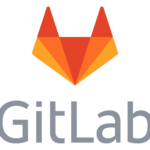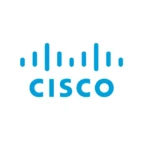VXLAN
VXLAN
VXLAN is a very large datacentre topic that contains multiple different technologies to create a modern datacentre. In this project, I will be creating spine leaf datacentre topology using VXLAN. A range of other protocols goes into making the modern datacentre the main one being BGP.
The aim of this project isn’t explain in great detail VXLAN or other protocols such as BGP in great detail. What I will be focussing on is the configuration of the VXLAN topology to replicate a modern datacentre.
VXLAN is a virtualisation technology that has an underlay and overlay network. The underlay network is similar to a traditional network, taking care of routing between the different switches in the datacentre. The overlay network runs on top of the underlay, and allows for VLANs to span the L3 overlay links. The technology that allows this is VXLAN. VXLAN operates similarly to a VPN, by encapsulating traffic between switches. In a VPN, the client and server don’t know nor care about the infrastructure that is between them. They just know that they are connected to each other. VXLAN does this for the datacentre.
With VXLAN the switches have tunnels created between themselves that allows traffic on the same broadcast domains to span over L3 links. VLAN to network mapping is not important as it is in a traditional network.
Terminology
Underlay: The underlay is the physical network infrastructure. It can be Layer 2 or 3 and is typically a what you would recognise as a traditional network.
Overlay: This is the virtual networks that can run on top of the underlay. This allows multiple tenants can use the same physical infrastructure, but be completely separated from each other. The same IP schemes can be used for different tenants. VXLAN is a technology that creates the overlay
VXLAN: Encapsulates the frames or packets inside a UDP packet that allows for stretching of layer 2/3 over routed links. It added a 50-54 byte header, so the MTU needs to be changed on interfaces using VXLAN to about 9200. More details from Juniper.
VNI: Virtual Network Identifier, is a 24bit header added to VXLAN header. Each local VLAN ID is assigned a VNI number, this is used to uniquely identify the VXLAN.
VTEP: Virtual Tunnel Endpoint, implemented in the overlay, this is the virtual interface that will handle the VXLAN traffic. Traffic is sent from one VTEP to another in the overlay tunnel. Similar to a VPN.
BUM: Broadcast, unicast and multicast traffic.
HER: Headend Replication or Ingress Replication. BUM traffic within a VNI is replicated and transmitted as unicast to each of the VTEPs in the flood-list for that VNI. Small deployments only.
EVPN: MP BGP is used to distribute local MAC address and MAC/IP bindings to VTEPs. Reduces flooding traffic with ARP suppression, more efficient for the underlay.
AnyCast Gateway: Each leaf with clients connected acts as the gateway and uses the same IP address for each SVI. Clients connected to each leaf will use that local gateway.
VRF: Virtual Routing and Forwarding, allows more than one routing table on a router. Routing tables are separate and can contain the same networks without impacting each other
RD: The Route Distinguisher separates one tenant from another, maintains uniqueness among identical routes in different VRFs. The same networks can be used for tenant 1 and 2, however the routes would have a RD attached to the end to signal they are for different tenants. Used with MP-BGP.
RT: Route Target allows for the import/export of routes in a VRF to another VRF. Sharing selected routes between VRFs.
MLAG: Multi Chassis Link Aggregation. Similar to Cisco vPC which allows a port channel to form between two switches acting as a logical single switch and a physical single switch. In a Spine Leaf topology, a switch would connect to a pair of leaf switches and use both uplinks to send traffic, increasing redundancy and increasing bandwidth on the uplinks.
This is a post that takes the previous Nexus EVPN VXLAN Fabric and the Nexus EVPN VXLAN Fabric...
This is a post that takes the previous Nexus EVPN VXLAN Fabric post, and uses Ansible to build...
In this post, I will outline the configuration for a VXLAN fabric using BGP EVPN and OSPF as...
These are the base configs I have used in my lab for all the Nexus switches. It’s enough...
I have been over the automatic creation of the VXLAN topology in the previous post. However,...
This is going to follow on from the previous post to get a basic three switch topology up and...
This lab use part of the Arista Spine and Leaf topology I have created in GNS3. Specifically,...
No posts found



